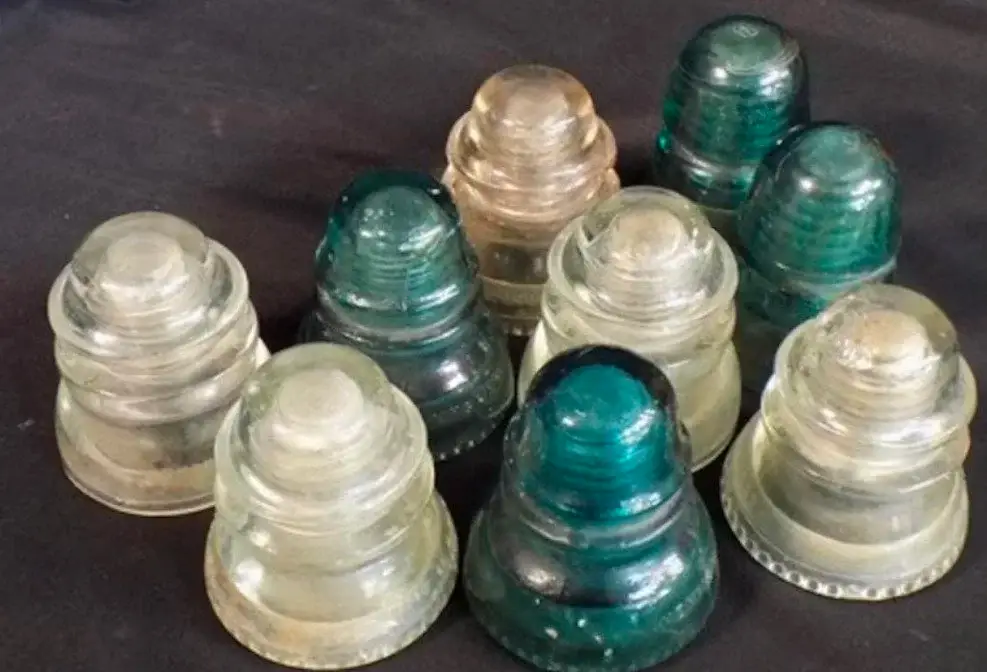Have you ever looked at a telephone pole and noticed those glass or porcelain pieces on top? They might look like just decorations, but they actually have an important job in communication. These helpful items are called insulators, and they help keep our electrical wires safe and our phone calls clear.
Safeguarding the Flow of Electricity
Insulators have a key job: they stop electrical wires from touching the pole or the ground. Imagine trying to make a long-distance call, and your voice suddenly cuts out after a little while. That wouldn’t be fun, right? Insulators make sure all the electricity stays in the wires so our important phone calls can keep going without any problems.

The Variety of Insulators
These simple objects come in many different styles and colors. While a lot of the older insulators were made from glass or porcelain, some were made from wood and glass, and even animal parts! You’d be surprised at some of the unusual materials used. The size of the insulator is important too. Smaller ones are used for telephone and telegraph wires, while larger ones are made for high-voltage electrical wires. It’s like having a special section for insulators based on how much voltage they can handle!
Keeping Voltage in Check
When it comes to power lines, the voltage affects how big the insulator needs to be. Electricity can be a bit tricky and might try to jump across a distance. That’s where the design of insulators helps out. Insulators with wide “umbrella” shapes and large lower parts act like careful bouncers at a nightclub, keeping the wires away from the pole and stopping any accidents from happening.

A Surprising Hobby
Believe it or not, collecting insulators is a popular hobby! This started becoming popular in the 1960s when utility companies began burying their wires, leaving a lot of old insulators behind. As the saying goes, one person’s trash is another person’s treasure. People who collect insulators come from all different backgrounds. Some like these glass pieces for how they look and use them to decorate windowsills and gardens, adding a bit of shine to their space. Others look for specific types of insulators. Prices can vary a lot; you might find one for less than a dollar or even get one for free at flea markets!
A Historical Touch
Most insulators that collectors have are between 70 and 145 years old, and some types haven’t been made since the early 1900s. Anything that’s old and no longer being produced often becomes collectible, and insulators are no different. They hold a piece of history and connect us to a time when communication was just starting to grow.

Appreciating the Role of Insulators
The next time you see one of those interesting glass or porcelain insulators on a telephone pole, take a moment to appreciate how important they’ve been in the history of communication. They might seem like old items, but they’ve made a lasting impact on how we connect with each other, whether through a phone call or a quick text message. Who knows? You might even feel inspired to start your own collection and join the many people who find beauty and history in these simple artifacts!
Automaker Suffers Major Losses of Billions Due to Electric Vehicle Investments in 2023.
As the push for electric vehicles persists despite public reluctance, the once-promising solution for environmental concerns is revealing significant drawbacks. Issues like inadequate charging infrastructure, limited range, battery problems, high repair costs, and supply chain disruptions have plagued the industry.
Despite these challenges, proponents like Joe Biden continue to advocate for electric vehicles. However, the lack of consumer interest has led to substantial financial losses for manufacturers. Ford Motor Company, for instance, reported a staggering $4.7 billion loss in 2023 from its electric vehicle product line, exceeding earlier projections.
The company attributed the losses primarily to intense competition driving down prices. With Ford selling around 72,608 electric vehicles in the year, the losses translate to roughly $65,000 per vehicle sold, an unsustainable business model. Moreover, Ford anticipates further losses, projecting up to $5.5 billion for 2024, particularly concerning in an election year.
Despite Chief Financial Officer John Lawler’s optimistic remarks about future profitability and customer adoption, the reality suggests otherwise. Ford’s flagship electric vehicle, the F-150 Lightning pickup, saw diminished demand, leading to production cuts. This setback is notable, especially as Biden’s administration aimed for 50% of new vehicle sales to be electric by 2030.
Watch Biden test drive the Ford Lightning pickup here:
General Motors has also dialed back production and tempered expectations, posting a $1.7 billion loss on electric vehicles in just the fourth quarter of 2023. Ford went on to state: “We said yesterday that we will launch our second-generation EVs when they can be profitable and deliver the kind of returns we want, and we will build a stand-alone profitable EV business. Meantime, we’re improving the contribution margin of our first-generation EVs.”



Leave a Reply